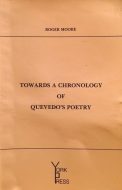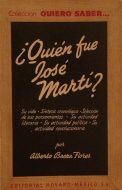Towards a chronology of Quevedo’s Poetry
Categories: Literary Criticism
Introduction: Much good work has been published in the last Fifteen years on the chronology of Quevedo’s poetry. J. M. Blecua’s first edition of the Poesía original appeared in 1963. Some of the individual poems were dated, but there was no Indice de poemas con referencias cronológicas until the second edition appeared in 1968. Meanwhile, in 1967, James O. Crosby brought out En torn a la poesía de Quevedo which contained (pp. 95-174) “la cronología de unos trescientos poemas.” This was followed, in 1969, by the first volume of Blecua’s monumental edition of Quevedo’s Obra poética. In it, individual poems were again dated by stylistic methods. Thus, Blecua wrote of poem 403 that “a juzgar por los versos 13-18, tan culteranos, el poema sería posterior a 1613.” J. O. Crosby, on the other hand, seems to have relied on the more accurate (but infinitely more painstaking) process of establishing dates from internal evidence. In this fashion, poem 298 has been dated 1613-1619 since the episode alluded to took place in Genoa which Quevedo visited several times in those years. Neither of these two eminent critics has attempted to trace the evolution of Quevedo’s style. Yet, by analysing a limited body of verse and by moving from the known (poems with a reliable date) to the unknown (undated poems) it should be possible to outline a tentative stylistic evolution in spite of the complications caused by our lack of knowledge of the dates of Quevedo’s frequent revisions. Quevedo’s love-poetry, with its collections to specifíc ladies (Lisi, Floris, Aminta, Amarilis), forms a single, easily identifiable body of verse, with few ramifícations outside itself. It is, therefore, an ideal subject to study.
In the present work, love-poems with a reliable dating have been analysed in some detail, as have the love-poems dedicated to specific ladies. This has revealed a series of five main periods within which other love-poems similar in style may be grouped. A clear stylistic evolution from one period to another is seen to emerge.
The wording of the title Towards a Chronology of Quevedo’s Poetry should show an awareness of the following: (i) the chronology is tentative in the extreme; (ii) it is of necessity incomplete, dealing as it does with only a small portion of Quevedo’s work (a mere 200 or so poems). In spite of this, the revised dates offered for some poems together with the skeleton framework of the suggested stylistic evolution may permit a few more pieces to be added to the vast unfinished (and highly problematic) mosaic of Quevedo’s verse.







